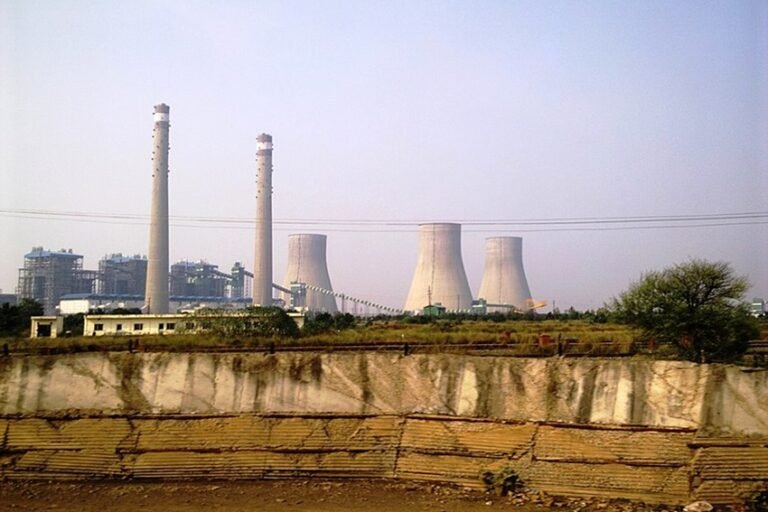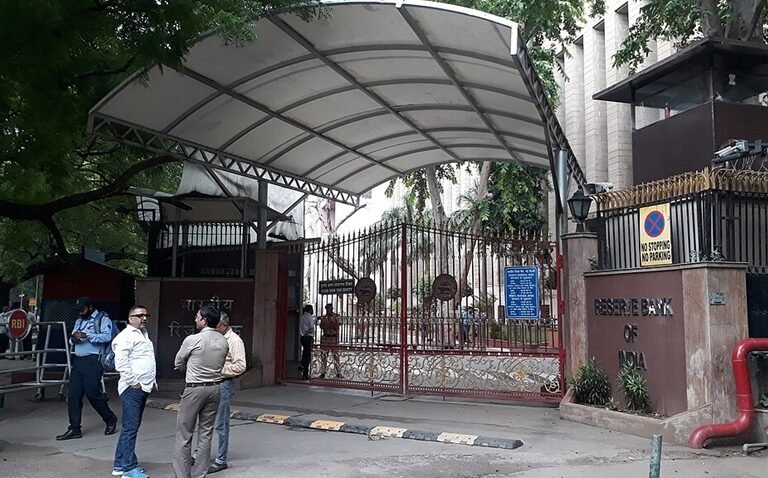- The Reserve Bank of India released a new draft of the project finance framework in May. To address risks and impacts, it must integrate social and environmental considerations, writes the author of this commentary.
- Large-scale projects such as highways and hydropower often rely on public financing, posing risks to public funds and significant environmental and social consequences.
- The framework should enhance governance, transparency, and accountability to ensure sustainable and responsible investments, balancing financial returns with broader social and environmental responsibilities.
- The views in the commentary are those of the author.
An expressway through a dense forest to facilitate trade, tourism, or pilgrimage; a massive hydropower project in the Himalayas producing electricity for our hot-as-hell metropolitan cities; and a vast solar park in Rajasthan to shift our power production from fossil fuels to renewables.
These are all instances united by two facts. One, such projects seek large volumes of finance from public banks and financial institutions (FIs) that run on public savings, investments, insurance installments, and more. These are risky investments with long gestation periods and uncertainties and the danger of public money being lost is ever-present. And second, projects of such scale have significant consequences for local communities, the environment, biodiversity, and climate.
This puts the recent announcement by RBI of a project finance framework for FIs, right in the heart of our present predicaments. Is public money flowing into the project benefiting everyone? Is the project adding to or mitigating climate emergencies, environmental degradation, loss of livelihood, and the rights of impacted communities?
Project finance refers to funding devoted to a project and repaid mostly through proceeds generated after the commencement of the project’s commercial operations. While guidelines for the management of stressed assets and insolvency resolution for operational projects are already in place, the recent release is an attempt to prevent cost overruns and mandate a regulatory apparatus for losses that take place during the construction phase of projects.
The prudential framework outlines guidelines for lenders providing project finance in infrastructure, non-infrastructure, and commercial real estate sectors. It also sets standards for restructuring lenders’ exposure in projects during implementation due to changes in the commencement date of commercial operations (DCCO).
It is public money
The prudential framework comes after a phenomenal crisis of bad loans. In recent years, banks have reduced these non-performing assets, mainly where the borrower defaults on repayment, from their balance sheets at a huge cost to public money. Banks have removed large chunks of loan defaults from their account books through massive write-offs, totalling Rs. 14.56 trillion from 2014 to 2023, with nearly half of these write-offs involving large corporations. The recoveries from this have been a meagre Rs. 2.04 trillion from April 2014 to March 2023. In addition, banks have sustained absurd amounts of haircuts (as high as 96%) through the insolvency process, where banks settle for a far lesser amount to resolve a loan default. Finally, the government has sought to make bank losses through recapitalisation, transferring capital directly to public banks to the tune of Rs. 2.86 trillion from April 2017 to March 2022.

The RBI’s Financial Stability Report highlights that at the peak of the non-performing assets (NPA) crisis in 2018, a significant portion of bad loans, or ‘stressed advances,’ were from the industrial and infrastructure sectors. Often financed through project funding, these sectors accounted for 24.8% of total stressed advances, including NPAs and restructured loans due to non-repayment issues.
The RBI prudential framework offers several safeguards, such as putting a resolution policy for stressed assets approved by the board, increased provisioning (up to 5% from existing 0.4 to 1%), the amount set aside to compensate for unforeseen losses suffered by the project. There are other measures such as constant monitoring of net present value, a variable which indicates whether, under prevailing conditions, the investment is likely to be profitable at the time of loan closure. For instance, a cost overrun owing to a natural calamity can lead to a sudden dip in the NPV, making the investment significantly less profitable.
One would have expected that the banking regulator, having borne such a steep cost of cleaning NPAs from banks’ account books, would have given more thought to understanding why industrial and infrastructure projects turned into bad loans.
The myriad causes – such as climate-related events, social unrest owing to land acquisition or environmental degradation, inadequacies in clearances provided by government agencies, and gaps in the lender’s governance framework – would have allowed everyone to see whether the proposed redressal framework addresses these recurring concerns.

Mega infrastructure in the world of ice and fire
Not only market risks but also mega investments in mega infrastructures are subject to climate, geographical, and socio-political risks. For instance, consider the near-total collapse of the Teesta stage 3 hydroelectric project during a Glacial Lake Outburst Flood event last year.
Even though the project received regulatory environmental clearance (as far back as 2006), a massive earthquake and other events led to huge cost increases. This was foreseen by the community and independent researchers, who had warned about the consequences of unrestrained development in the seismically high risk region.
The project was close to becoming a non-performing asset (NPA). At the time of completion, it cost Rs. 139.65 billion, nearly two and a half times the originally assigned Rs. 57 billion. Almost all of this money came from the government budget, public sector banks, and non-banking finance companies such as REC Limited and Power Finance Corporation.
Similarly, as recently as a few days ago, the Bharatiya Janata Party (BJP)-supported government in Maharashtra was forced to ‘stall’ its flagship project, the 802 km Goa-Nagpur Shaktipeeth highway. The project was proposed by the government in the face of vehement opposition from farmers who stood to lose their agricultural land. In the just concluded Lok Sabha elections, the BJP alliance lost almost 12 seats in the region spanned by the proposed expressway, forcing the government to halt the project. The project was still in its planning stage and had not yet raised a loan. Still, the instance is a stark reminder of why socio-economic-political considerations are important for the health of a bank’s finances.
According to figures released by the Ministry of Statistics and Programme Implementation in May 2024, out of 1817 ongoing central sector infrastructure projects, a whopping 756, nearly 42%, have witnessed cost overruns. The reasons listed are land acquisition, environmental clearance, financial issues, contractual/internal issues, manpower shortage, and litigation issues.
Financial institutions can no longer remain unaffected by the fact that their investments are immersed in a socio-economic, cultural, climate, and environmental context. The call is for financial institutions to build governance frameworks with more profound sensitivity and understanding of these issues. The framework on prudential project finance leaves this unaddressed.
What propels this argument is not simply a loss of profits for financial institutions, but a loss of public money entrusted with them and its exposure to big-ticket environmental, climate, and social harms.
Responsible financing beyond carbon emissions
In the last few years, the RBI has attempted to evolve governance structures (board-level changes, target setting and monitoring, disclosures) for financial institutions to address climate-related financial risk to their investments. It is also nudging them towards gradually decreasing their investments in greenhouse gas (GHG) emitting businesses and shifting to renewables. To what extent these directives help achieve their objective will be clearer in the near future.
Internationally, however, sustainable and responsible financing has come to mean much more than monitoring and reducing carbon and GHG emissions. For instance, the Principles of Responsible Banking adopted by the United Nations Environment Programme Finance Initiative in 2019, which has signatory banks from the world over, including one (YES Bank) from India, asks financial institutions to assess and address the impact of their investments on people, environment, and climate. It asks them to direct their investments towards Sustainable Development Goals aimed at addressing various social, economic, and environmental challenges by 2030.
This is a significant perspectival switch: from making FIs calculate and prevent financial risk to their investments owing to ‘climate risk’ to making them evaluate and reduce the adverse socio-economic-environmental-climate impact of their investments. Such principles should not remain “feel good” propositions that FIs agree upon to embellish their public relations material but do little to implement in their big-ticket lending. The project finance framework developed by the central regulator needed to incorporate concrete aspects of such principles.

Responses to RBI’s prudential framework
The framework announced by RBI has elicited two very distinct responses. Certain banks and Non-Bank Financial Companies (NBFCs) have urged the central regulator to reconsider the drastic increase in provisioning norms, from 0.4% to 5%, which they claim will make credit more expensive for borrowers and may lead to reduced profits for the FIs.
On the other hand, several civil society organisations, non-profits, researchers, academics, and organisations working with project-impacted communities have urged RBI to reconsider big-ticket risky lending through scheduled commercial banks and instead argued for its restriction to specialised development finance institutions equipped with requisite governance mechanisms and risk absorption capacity over long periods of uncertainty. They have made a case for evolving a prudential framework in line with an exploration of causes that led to substantial cost overruns and NPAs and, finally, asking for ensuring full accountability of financial institutions on climate, environmental, and socio-economic impacts through comprehensive oversight, public disclosure, and grievance redressal mechanisms.
Will it be banking as usual for the central regulator? Or will it take on the onerous but necessary question that asks for a fine balance between profit and people, accountability to investors, and accountability to communities, environment, and climate between the past and the future?
The author is a researcher at a New Delhi based non profit Centre for Financial Accountability, India.
Banner image: Delhi Meerut Expressway, connecting Delhi with Meerut via Dasna in Ghaziabad, India. The RBI draft framework outlines guidelines for lenders providing project finance in infrastructure, non-infrastructure, and commercial real estate sectors. Image by Banswalhemant via Wikimedia Commons (CC-BY-SA-4.0).

![[Commentary] Why RBI’s financial governance should address social and environmental concerns](https://investinsidernews.com/wp-content/uploads/2024/07/Delhi-Merut-Expressway-1024x768.jpg)